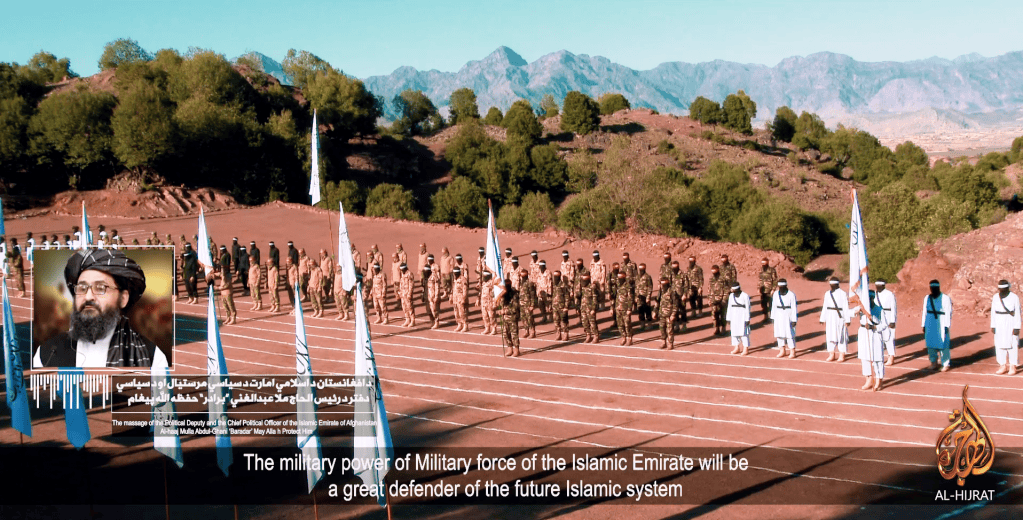
The Taliban’s two deputy emirs and the head of its political office lauded suicide bombers and other “martyrdom seekers” yesterday who are working to achieve the goal of the restoration of the Islamic Emirate of Afghanistan.
The senior Taliban leaders sang the praises of suicide bombers the same day that U.S. Special Representative for Afghanistan Reconciliation somehow told reporters that the Taliban can be relied upon as an effective counterterrorism partner.
Mullah Abdul Ghani Baradar, the “Political Deputy of the Islamic Emirate and head of the Political Office,” and deputy emirs Sirajuddin Haqqani and Mullah Mohammad Yaqoub, celebrated the Taliban’s suicide teams in audio messages that were delivered at a graduation ceremony at the Al Fateh Military Camp.
Voice of Jihad, the Taliban’s official website, released a video, titled Victorious Force (1), which included the audio messages and footage of the graduation ceremony. According to the Taliban, a “respected delegation from the Military Affairs Commission of the Islamic Emirate of Afghanistan” attended the graduation.
Haqqani and Yacoub’s statements were unremarkable; both praised the fighters, their commitment, military prowess, and their importance in the Taliban’s jihad. Yacoub, as the Taliban’s military emir, and Haqqani, who has played a key role in the organization and development of the Taliban’s military strategy, predictably extolled the group’s suicide bombers and foot soldiers.
However, Baradar was tasked with negotiating and maintaining the withdrawal deal with the U.S. – as well as maintain relations with other countries through the Taliban’s political office in Doha. His job is to maintain the fiction that the Taliban will negotiate with the Afghan government to enter into a power sharing agreement, as well as serve as an effective counterterrorism partner to battle al Qaeda.
In his brief statement that was broadcast to the Al Fateh camp graduates, Baradar said that the Taliban’s military “will be a great defender of the future Islamic system” and “is the true force of all Afghans.”
“The military power of Military force of the Islamic Emirate will be a great defender of the future Islamic system it will be defending its Islamic faith and its soil as it is doing now and will work for peace, security and stability of the Islamic system … The military force of the Islamic Emirate of Afghanistan is the true force of all Afghans.”
Mullah Abdul Ghani Baradar, Victorious Force (1), Voice of Jihad
Baradar’s statement was in line with the official Taliban position. The Taliban has repeatedly said that its Islamic Emirate of Afghanistan is the only legitimate representative of the Afghan government, that an “Islamic system” run by the Taliban is the only acceptable form of governmen. It has not waged jihad to share power with the current Afghan government, which it calls, “un-Islamic,” and “illegitimate.” In a fatwa, or religious decree, that was released on Voice of Jihad just seven days after signing the withdrawal deal with the U.S., the Taliban said that the Islamic Emirate of Afghanistan is the only acceptable government for Afghanistan, and its emir, Mullah Haibatullah, the true leader.
Al Fateh Military Camp trains suicide bombers
The Victorious Force video provided interesting information on the Taliban’s organization of its suicide teams. During the graduation ceremony, a camp official identified the various Taliban martyrdom units, and explained how each are deployed. Each unit is distinct; its fighters were dressed and outfitted differently.
The camp officials listed the groups as the “waistcoat martyrdom seeking squad,” or standard suicide bomber, infantry, infiltration, special operations, suicide car bombers (which they also call artillery), and “laser martyrdom seeking units,” which appear to be shock troops.
Two of the units directly employ suicide bombers: the “waistcoat martyrdom seeking squad,” which was shown wearing their suicide vests, and the “artillery and heavy car bombs martyrdom seeking squad.” Al Qaeda imparted this tactic to the Taliban, and continues to support the Taliban to this day.
At least two of the units, the “Special Operations Martyrdom seekers” and the “laser martyrdom seeking units,” are likely part of the Taliban’s Red Unit, which is also known as the Blood Group. The two graduating squads were shown wearing the group’s distinctive red headband, and employ the tactics used by the Red Unit, which serves as both special operation forces and shock troops at the tip of the spear of the fighting.
[Note, the term “laser martyrdom seeking units,” which is provided by the Taliban, likely is a poor translation and is better described as precision attack squad.]
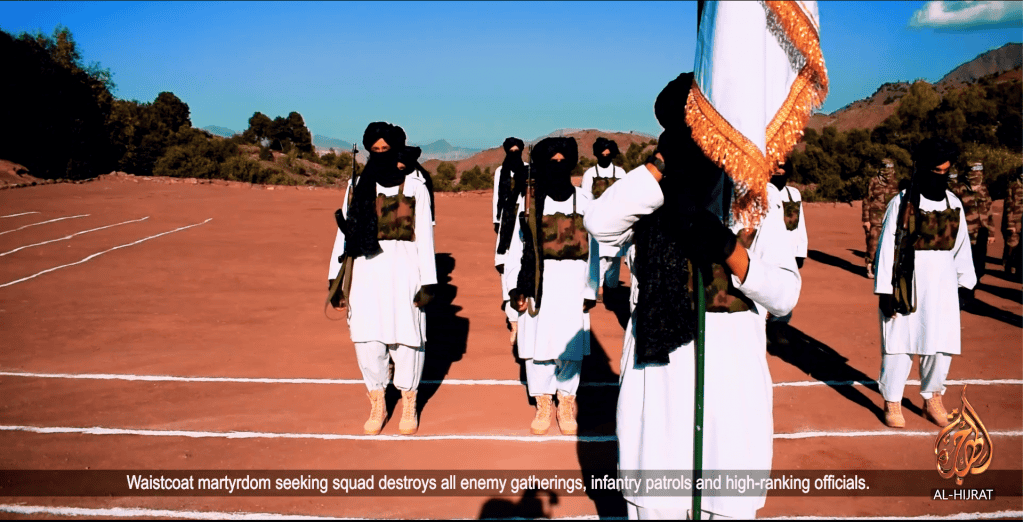
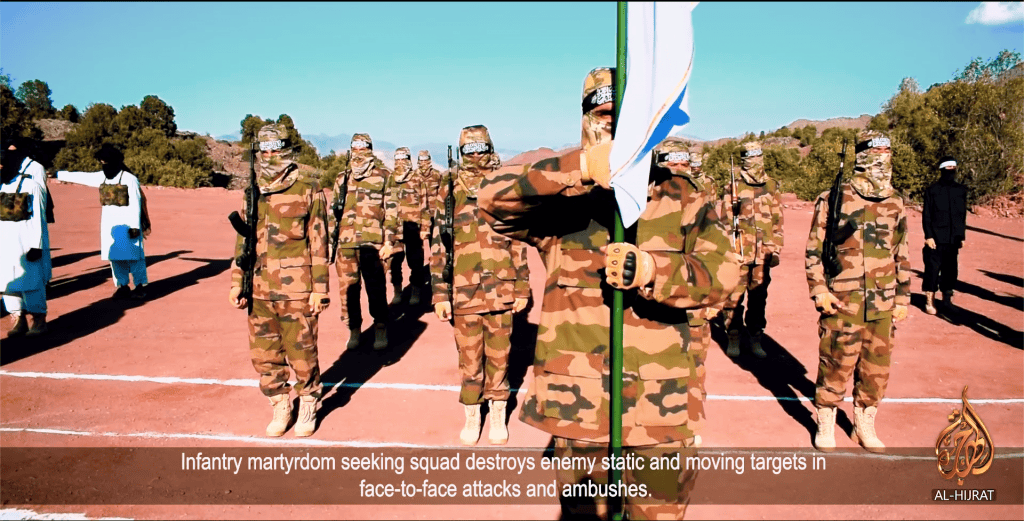
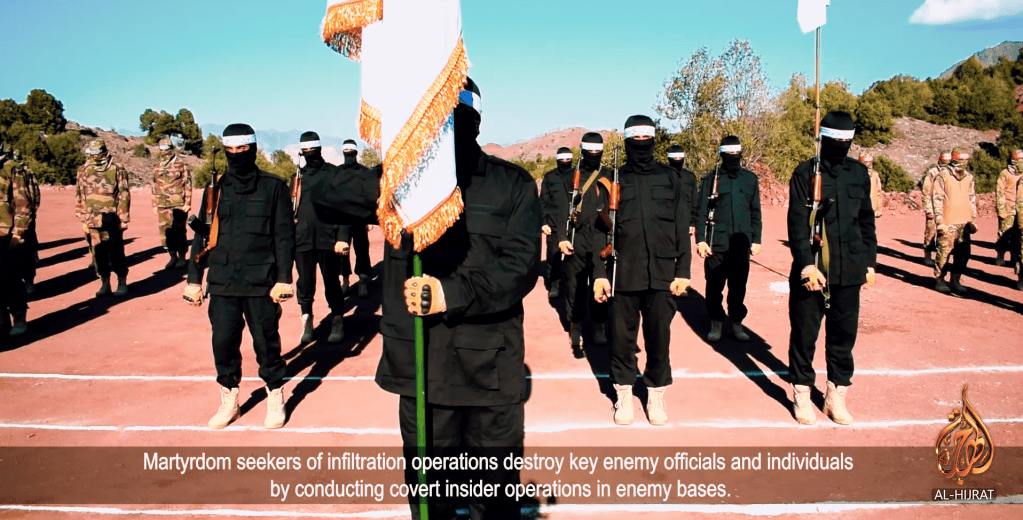
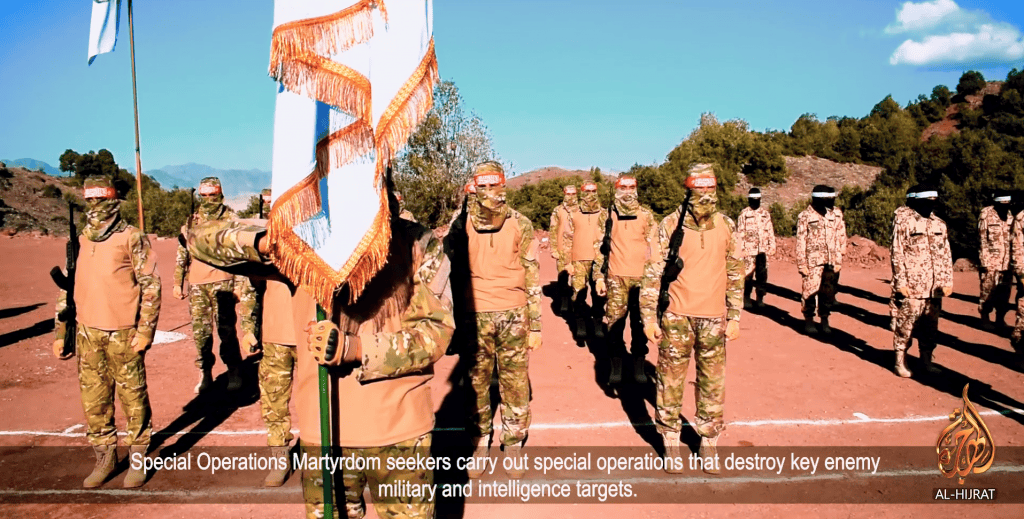
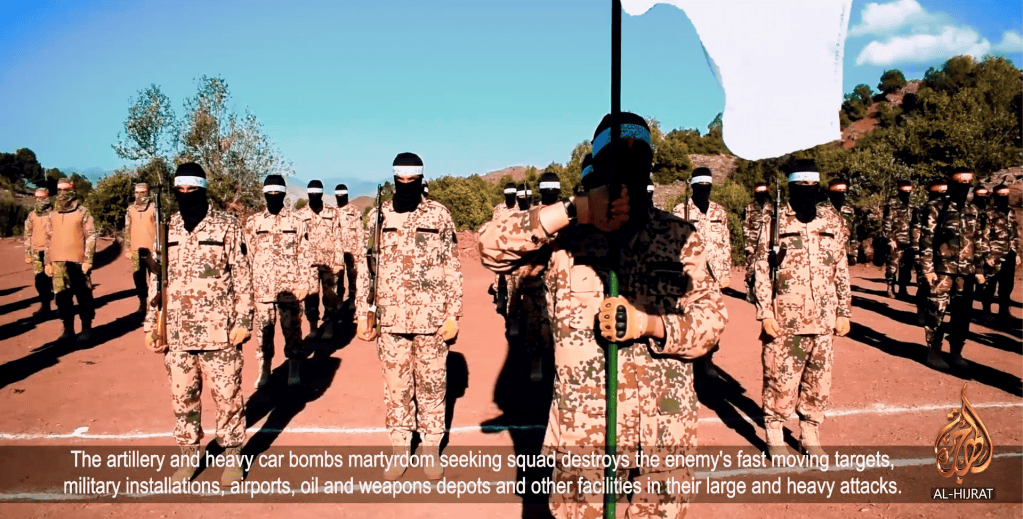
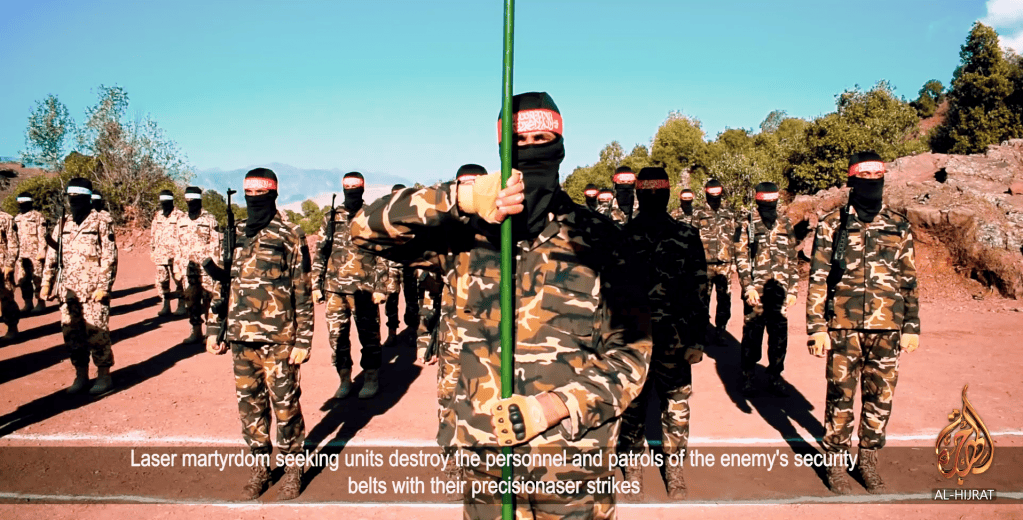
Another Taliban camp operating in the open
Yet again, photos from the graduation prove the Taliban is operating one of its training camps openly, in broad daylight and without fear of reprisal. More than 100 graduates were assembled in the open, in formation, in front of a review stand packed with Taliban officials. The Taliban’s white banner was displayed prominently throughout the camp.
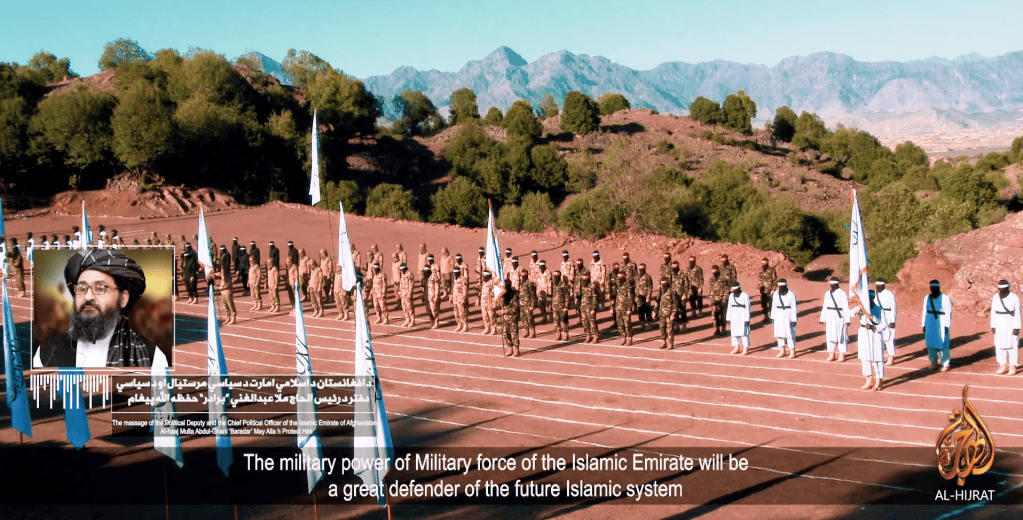
Western and Afghan intelligence officials should be able to easily determine the location of the camp. A distinctive mountain range is seen in the background of the video.
The location of the Fateh camp was not disclosed by the Taliban, but it is either located in Afghanistan or neighboring Pakistan. If it is located in Afghanistan, then the video highlighted the inability of Afghan security forces to control the country. If it is located in Pakistan, it highlighted the Pakistani government’s unwavering support for the Taliban, despite the government’s claim that it seeks to further peace in Afghanistan.







